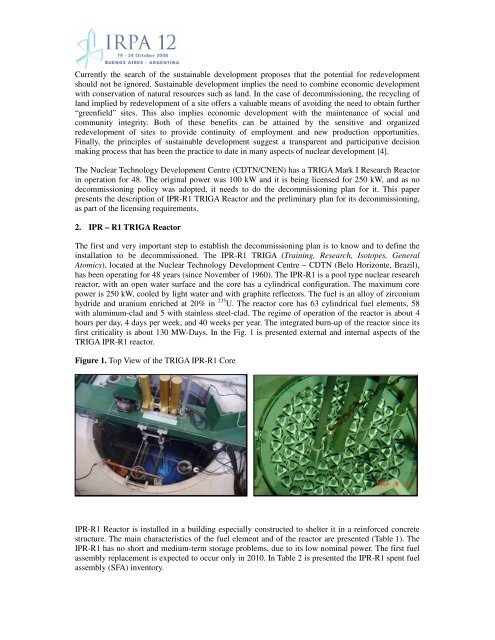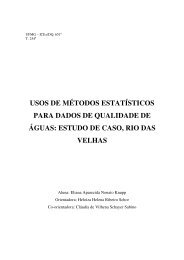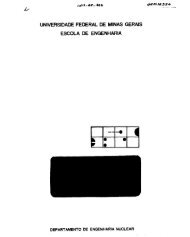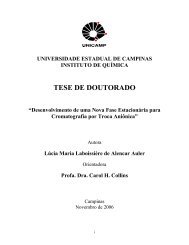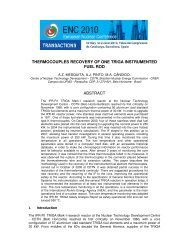ipr-r1 triga research reactor decommissioning plan - CDTN
ipr-r1 triga research reactor decommissioning plan - CDTN
ipr-r1 triga research reactor decommissioning plan - CDTN
You also want an ePaper? Increase the reach of your titles
YUMPU automatically turns print PDFs into web optimized ePapers that Google loves.
Currently the search of the sustainable development proposes that the potential for redevelopment<br />
should not be ignored. Sustainable development implies the need to combine economic development<br />
with conservation of natural resources such as land. In the case of <strong>decommissioning</strong>, the recycling of<br />
land implied by redevelopment of a site offers a valuable means of avoiding the need to obtain further<br />
“greenfield” sites. This also implies economic development with the maintenance of social and<br />
community integrity. Both of these benefits can be attained by the sensitive and organized<br />
redevelopment of sites to provide continuity of employment and new production opportunities.<br />
Finally, the principles of sustainable development suggest a transparent and participative decision<br />
making process that has been the practice to date in many aspects of nuclear development [4].<br />
The Nuclear Technology Development Centre (<strong>CDTN</strong>/CNEN) has a TRIGA Mark I Research Reactor<br />
in operation for 48. The original power was 100 kW and it is being licensed for 250 kW, and as no<br />
<strong>decommissioning</strong> policy was adopted, it needs to do the <strong>decommissioning</strong> <strong>plan</strong> for it. This paper<br />
presents the description of IPR-R1 TRIGA Reactor and the preliminary <strong>plan</strong> for its <strong>decommissioning</strong>,<br />
as part of the licensing requirements.<br />
2. IPR – R1 TRIGA Reactor<br />
The first and very important step to establish the <strong>decommissioning</strong> <strong>plan</strong> is to know and to define the<br />
installation to be decommissioned. The IPR-R1 TRIGA (Training, Research, Isotopes, General<br />
Atomics), located at the Nuclear Technology Development Centre – <strong>CDTN</strong> (Belo Horizonte, Brazil),<br />
has been operating for 48 years (since November of 1960). The IPR-R1 is a pool type nuclear <strong>research</strong><br />
<strong>reactor</strong>, with an open water surface and the core has a cylindrical configuration. The maximum core<br />
power is 250 kW, cooled by light water and with graphite reflectors. The fuel is an alloy of zirconium<br />
hydride and uranium enriched at 20% in 235 U. The <strong>reactor</strong> core has 63 cylindrical fuel elements, 58<br />
with aluminum-clad and 5 with stainless steel-clad. The regime of operation of the <strong>reactor</strong> is about 4<br />
hours per day, 4 days per week, and 40 weeks per year. The integrated burn-up of the <strong>reactor</strong> since its<br />
first criticality is about 130 MW-Days. In the Fig. 1 is presented external and internal aspects of the<br />
TRIGA IPR-R1 <strong>reactor</strong>.<br />
Figure 1. Top View of the TRIGA IPR-R1 Core<br />
IPR-R1 Reactor is installed in a building especially constructed to shelter it in a reinforced concrete<br />
structure. The main characteristics of the fuel element and of the <strong>reactor</strong> are presented (Table 1). The<br />
IPR-R1 has no short and medium-term storage problems, due to its low nominal power. The first fuel<br />
assembly replacement is expected to occur only in 2010. In Table 2 is presented the IPR-R1 spent fuel<br />
assembly (SFA) inventory.


